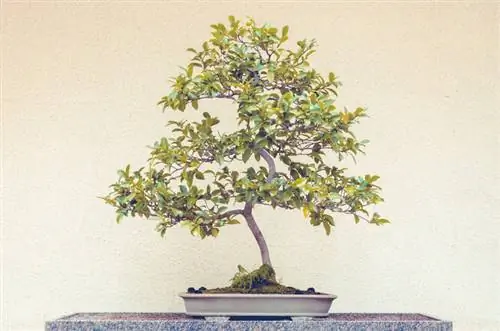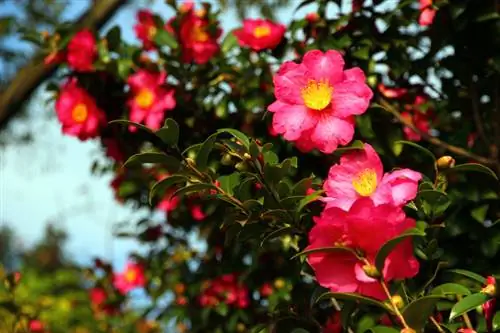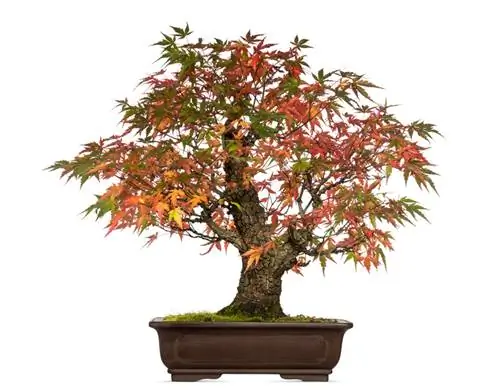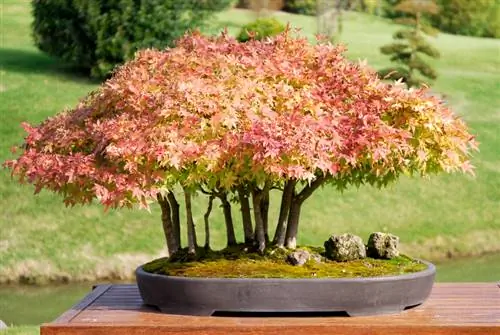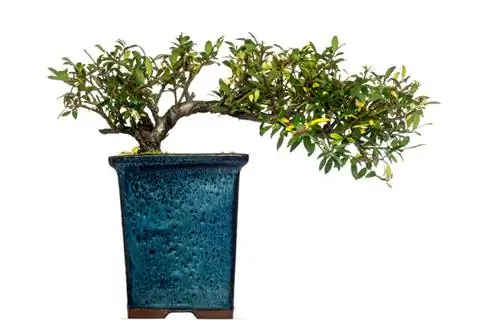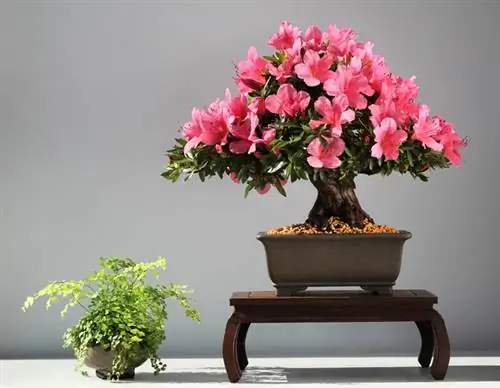- Author admin [email protected].
- Public 2023-12-16 16:46.
- Last modified 2025-01-23 11:20.
The Japanese camellia (Camelia japonica) has been a plant species that has been frequently used for growing bonsais for several centuries due to its growth habit and attractive flowers. Under optimal conditions, this type of bonsai can reach a very long age, even with a very compact growth habit.

How do you care for a Japanese camellia as a bonsai?
To care for the Japanese camellia as a bonsai, cultivate the seedling under good site conditions, pay attention to slightly acidic soil, dip the root balls regularly and ensure overwintering at temperatures above 15 °C.
The right care for the Japanese camellia as a bonsai
There are now a number of plant species that serve as “source material” for the creativity of bonsai gardeners in this country. For example, while a mussel cypress bonsai is evergreen all year round, bonsai made from red maple and Japanese cherry lose their leaves even in protected winter quarters. If you want to combine the evergreen look of a bonsai with fresh green needles with attractive flowers and the appearance of a typical deciduous tree, then the Japanese camellia could be exactly the right choice for you: after all, even in the miniature version, this tree produces magnificent flowers, but at the same time they lose them at no time (except in the case of serious care errors) its leaves.
How to turn a seedling into a bonsai
First of all, the seedling should be cultivated for a few years under the best possible site conditions so that he althy root growth occurs analogous to the growth of the trunk and branches. When transplanting into a classic, flat bonsai pot (€24.00 on Amazon), the roots of the Japanese camellia may need to be carefully shortened. Slightly woody shoots can be wired between October and February. This causes the emerging branches and twigs of the small trees to be pulled downwards towards the planter, which in turn results in the typical tree-like habit in a smaller model form. In order for this optical transformation to really succeed aesthetically, cutting measures should be carried out extremely carefully and well thought out.
These pests and care errors threaten the he alth of a Japanese camellia trained as a bonsai
Pests such as the black weevil or scale insects can occasionally become a problem if you cultivate the Japanese camellia as a bonsai on your own windowsill. As a rule, the death of the plants or at least a badly damaged appearance can be traced back to certain care errors:
- slightly acidic soil preferred (do not water with very hard water)
- Regular dipping of the root balls protects against drying out
- overwintering that is too cool: temperatures in the winter quarters should constantly be above 15 degrees Celsius
Tip
Wiring a Japanese camellia to train the growth habit into a bonsai should, if possible, be done during the winter months on the already slightly woody shoots. Be sure to remove the wires during the summer months to avoid creating unsightly spots along the bark of the Japanese camellia during this growth period.

